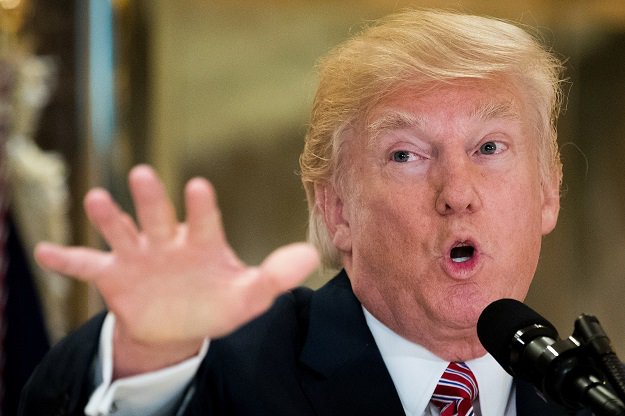
Other elements of the plan seem to be confused, clichéd, lack historical analysis and and make little political or military sense. There is lacklustre advisory capacity by the State Department and Pentagon, if they indeed provided input for the plan whose main parts have been explained by Mr Trump.
Troop levels related to ground conditions
If conditions on the ground and not timelines will decide strategy and troop levels, then Washington is in situ for another four more presidential terms. This timeline will further increase if the US wants the Taliban not to wait it out — they live in a country and do not have to cross the Atlantic. Can 4,000 additional forces in addition to the existing 8,400 break the stalemate with the Taliban? Afghanistan has a total of 34 provinces, meaning an additional 117.64 troops per province — that can only be a winning number if they are all supermen.
Remember there was a stalemate there even when the US and Nato deployed 140,000 soldiers. So how can one expect 4,000 troops to change the equation? It just defies military logic. The additional forces, as envisaged by the Trump plan, will undertake counter-terrorism operations and train Afghan forces. Doesn’t it imply that the existing forces on garrison duty were twiddling their thumbs? In all probability, the additional troops will repeat history of ‘General Custer’s Battle of Little Big Horn’.
Military autonomy and no micro management
Trump’s contention that the troops in Afghanistan had no autonomy to attack the Taliban and other terrorists and were micromanaged by Washington is baffling.
Are US troops sitting in guard posts then? Who dropped the Mother of All Bombs, conducted anti-insurgent operations and carried out drone attacks and air raids? Definitely US troops and not some aliens. Moreover, classic military micro management is having a four-star general commanding 8,400 troops — no change is envisaged in this policy.
By removing the need for so-called micromanagement appears to be a scapegoat ploy. The US commander on the ground will be the fall guy for the commander in chief safely ensconced in the White House, Joint chiefs in Pentagon and diplomats in the State Department. Even with 12,400 troops General Nicholson cannot win or break the stalemate. The result then is a new four-star commander in Afghanistan.
Political talks with Taliban
The goal of reaching a political settlement with the Taliban is hardly new. The US has been advised this time and again by Pakistan and other mature stakeholders. However, by ruling out any timeline for a withdrawal of US troops from Afghanistan the prospects of such a settlement are dim. This would have been a workable option between the years 2002 and 2008 when the ground position was favourable. In the present circumstances the Taliban are unlikely to negotiate on these terms.
The plan appears to be relying on the inclusion of some Taliban in a broad settlement following an effective military engagement. But the Americans seem to have forgotten that the Taliban represent 60 per cent of the Afghan population and no settlement is possible without them. Moreover, by eliminating the Taliban leadership with drone attacks they cannot expect to reach a settlement.
The Quadrilateral talks or the 2+2+1 process involving Pakistan, Afghanistan, the US, China and the Taliban failed when Taliban leader Mullah Mansoor was killed on 21st May 2016.
Replacing Pakistan with India
This portion of the plan is what happens when history, regional environment and geography are ignored while formulating policy options. Pakistan has suffered most from the battle to preserve the independence of Afghanistan since the Soviet invasion in 1979. Up to 60 per cent of the Afghan population took shelter in Pakistan as refugees. Of these, three million still remain in our country.
The Taliban under the guise of the ‘Mujahedeen’ were created by the US to fight the Soviet Union. When US forces invaded Afghanistan in December 2001 it was Pakistan, which provided all logistical support and suffered a violent blowback effect along its western border. The Taliban were defeated in 2001 with Pakistan’s support. At that time if Washington had heeded Islamabad’s advice for negotiations from a position of strength, the US would not be in the present Afghan quagmire.
Pakistan has lost 60,000 troops and civilians in the fight against the Taliban since 2001. This figure does not include the fatalities caused by US drone attacks on its soil.
Trump’s claim of giving Pakistan $30 billion or so must be debunked. In fact, the United States owes Pakistan over $120 billion. Pakistan has cleared all sanctuaries and hideouts of terrorists along its western border. These terrorists are now striking us from safe havens in Afghanistan, yet US forces do nothing to stop them.
India was a strong supporter of the Soviet invasion of Afghanistan in 1979. Its interference in Afghanistan has destabilised the region and made the conflict more intractable. Ample evidence exists of Indian-sponsored terrorism from Afghan soil. Trump should not look at India with only mercantile benefits. By arraying India against Pakistan the US leader is disturbing a delicate nuclear equilibrium and exacerbating regional rivalries.
No nation-building
The world would appreciate it if the Americans stopped building democracies in countries such as Afghanistan, Iraq, Syria and many others. Millions of people would still be alive if this realisation had come earlier. There would have been no Islamic State or Da’ish, al Qaeda and many other violent outfits, if the US was killing actual terrorists. Even 9/11 would not have happened if the world led by the US had not walked away from Afghanistan after the Soviet defeat. Now maybe Afghanistan should sort out its own destiny.
Postscript
In a recent comment on the Afghanistan plan, US Secretary of State Rex Tillerson said his country intends to replicate the lessons of fighting the Islamic State. Iraq and Syria are not Afghanistan. Nor is the IS or al Qaeda like the Taliban. Afghanistan remains a mess because in March 2003, the US invaded Iraq. Nothing could have been more tragic than that. What is happening in Spain, France, Belgium, the UK, Syria, Turkey and other parts of the world is a spinoff from the US plan to invade Iraq and not first finish its project in Afghanistan.
Published in The Express Tribune, September 2nd, 2017.
Like Opinion & Editorial on Facebook, follow @ETOpEd on Twitter to receive all updates on all our daily pieces.
1724760612-0/Untitled-design-(12)1724760612-0-405x300.webp)











COMMENTS (7)
Comments are moderated and generally will be posted if they are on-topic and not abusive.
For more information, please see our Comments FAQ